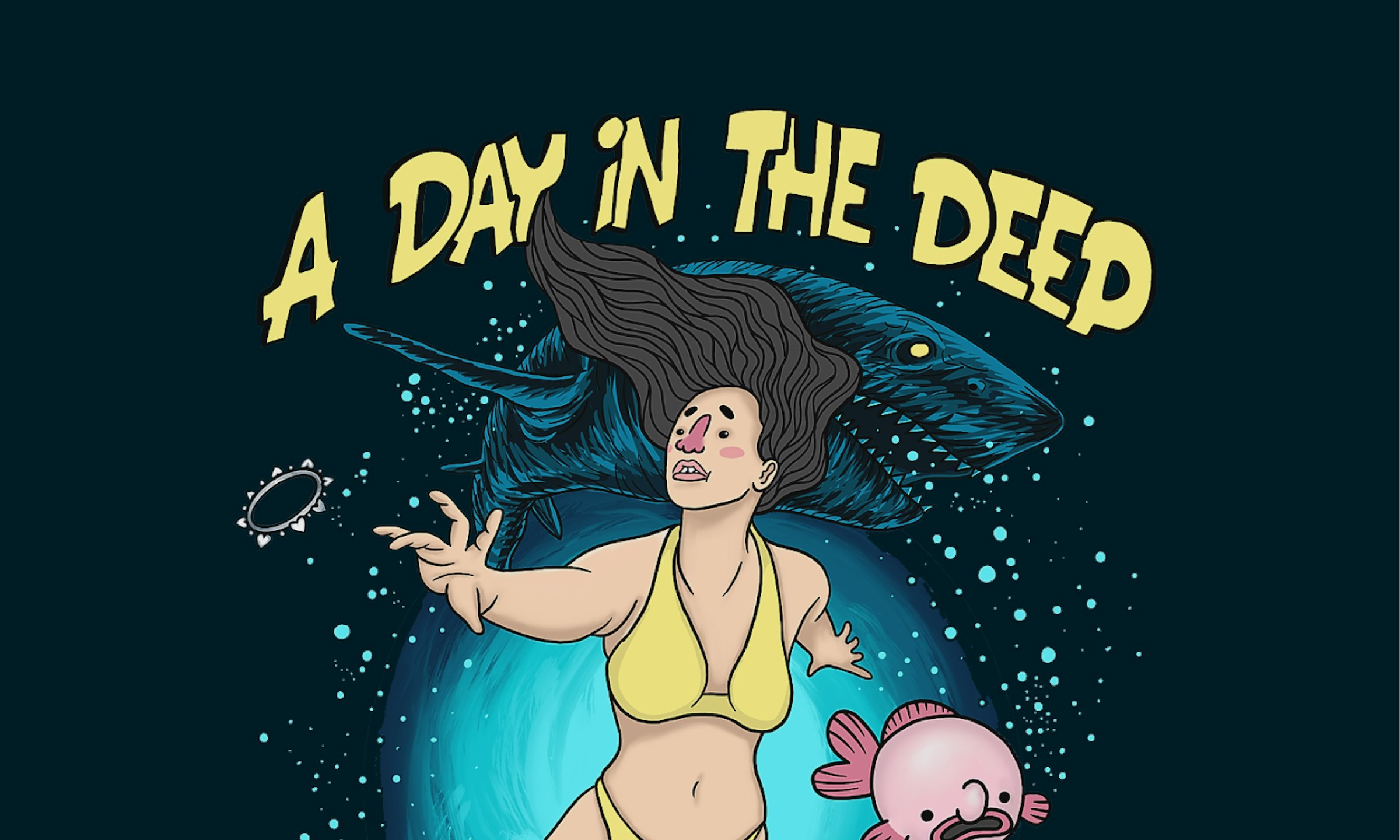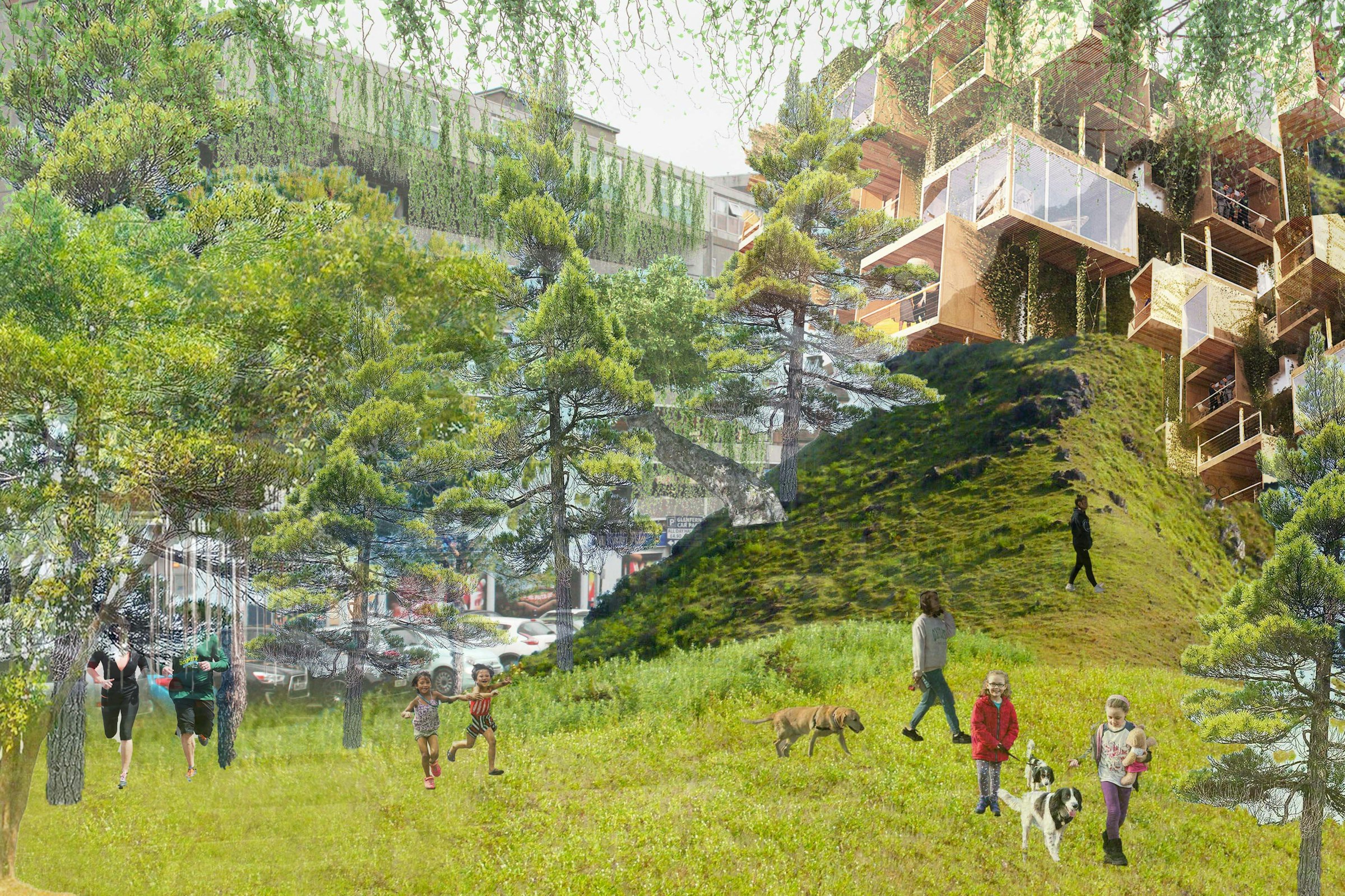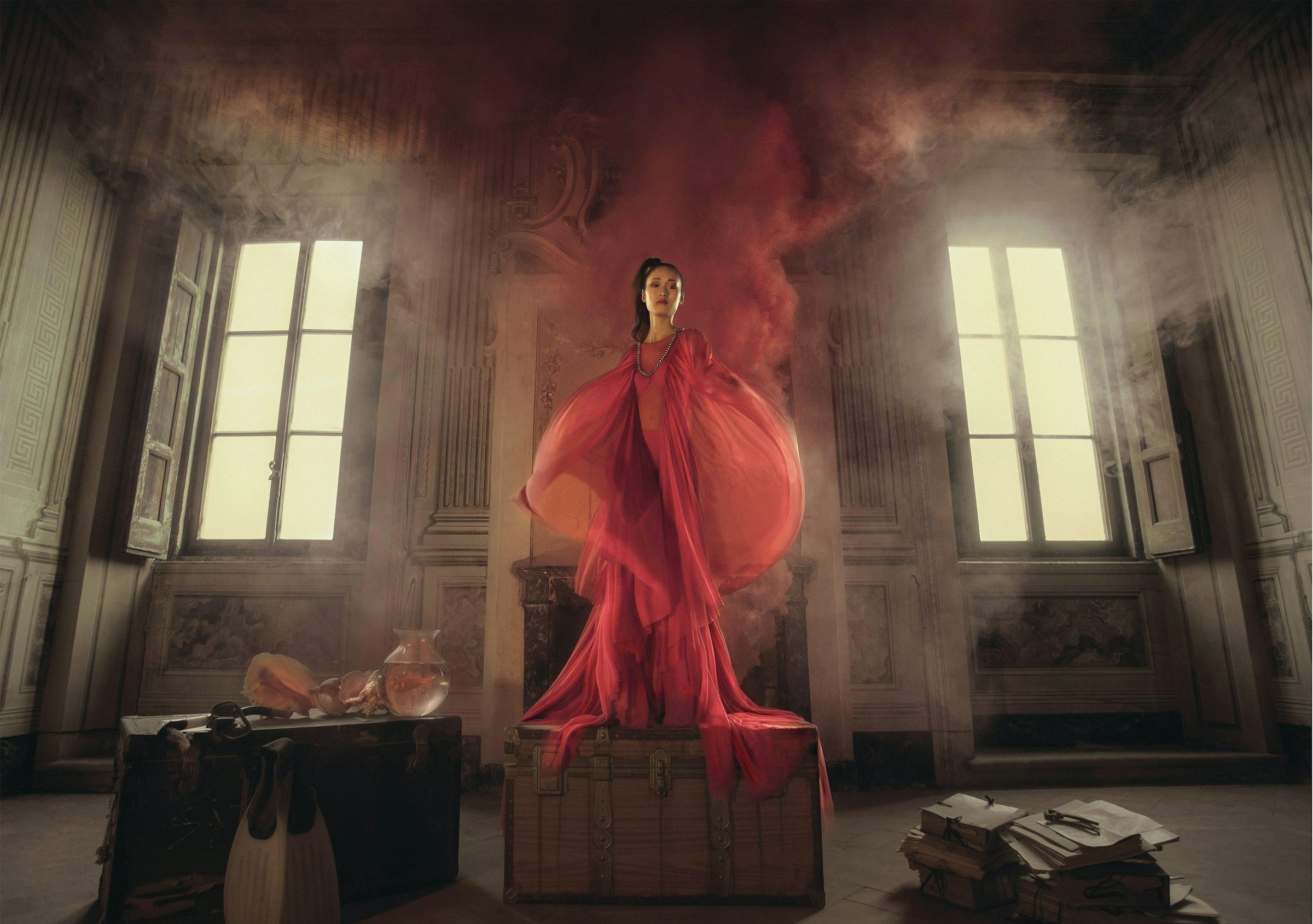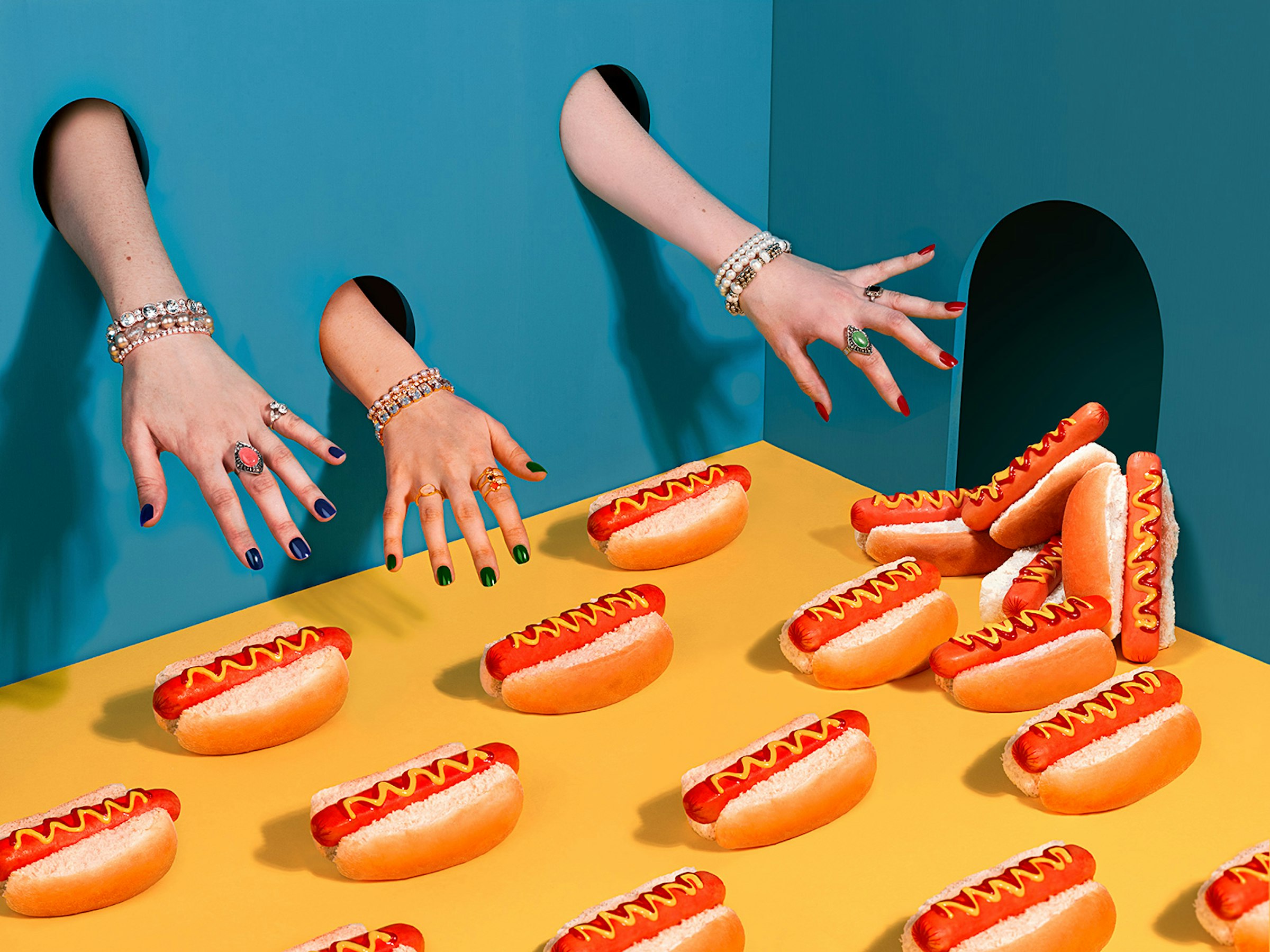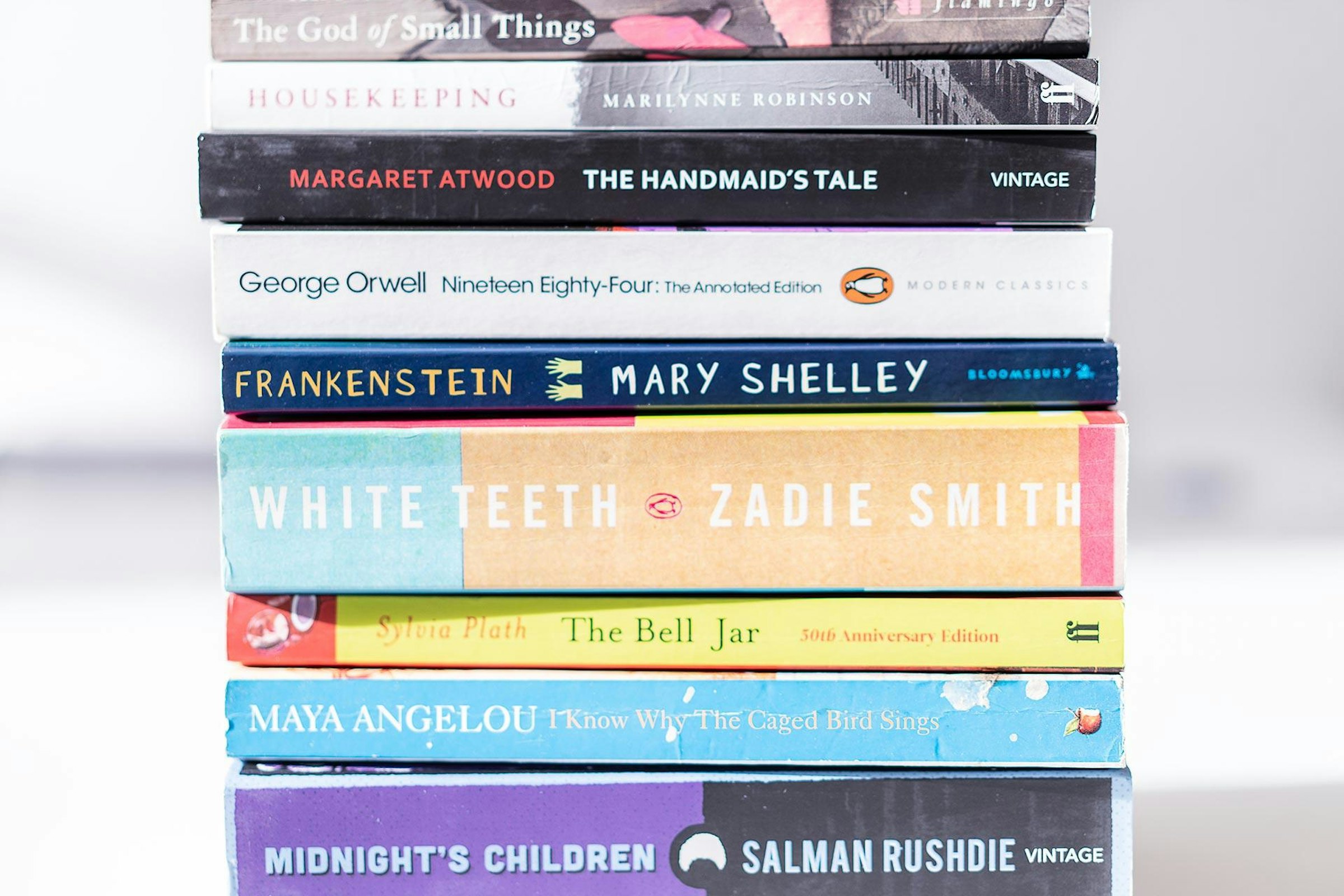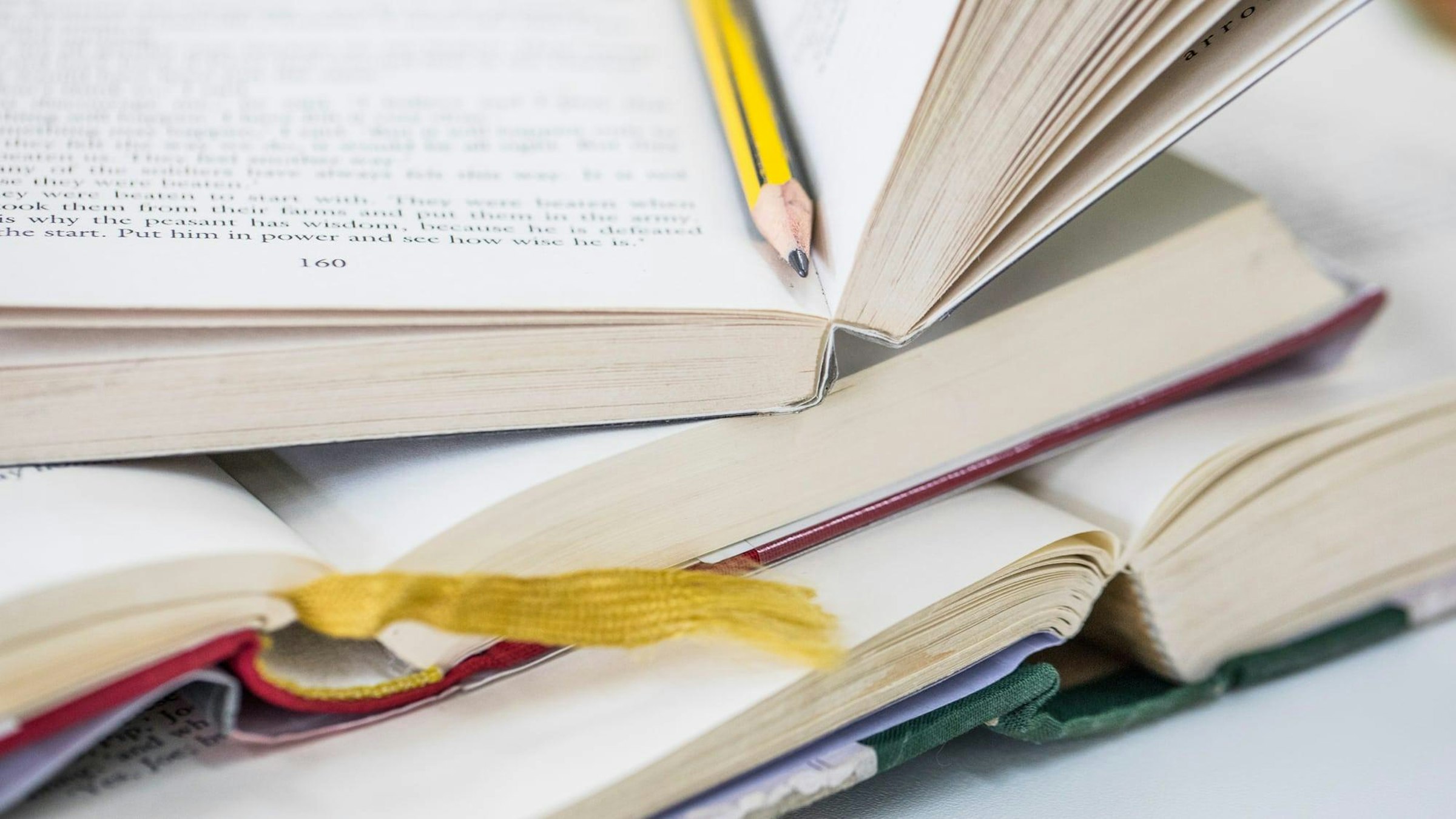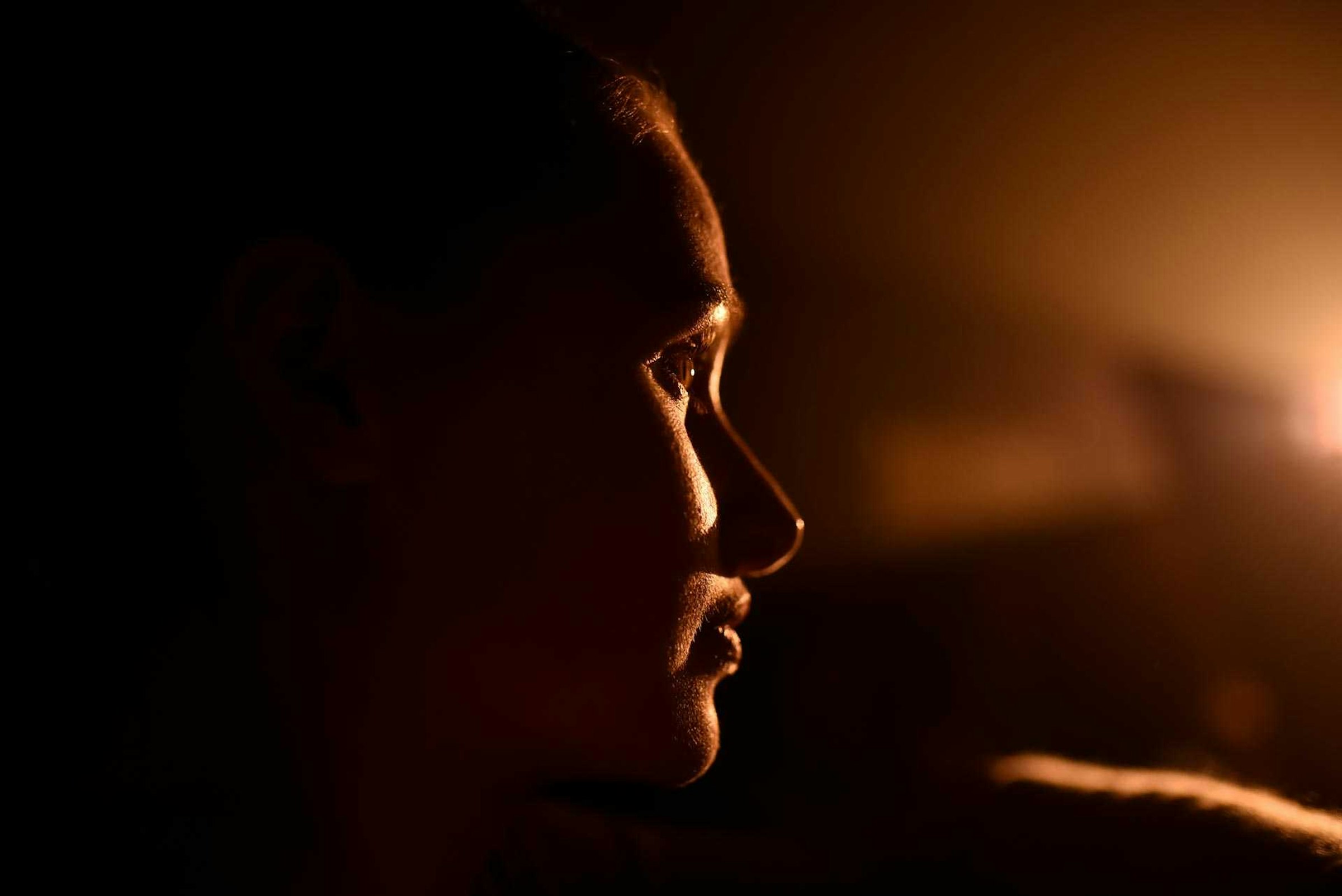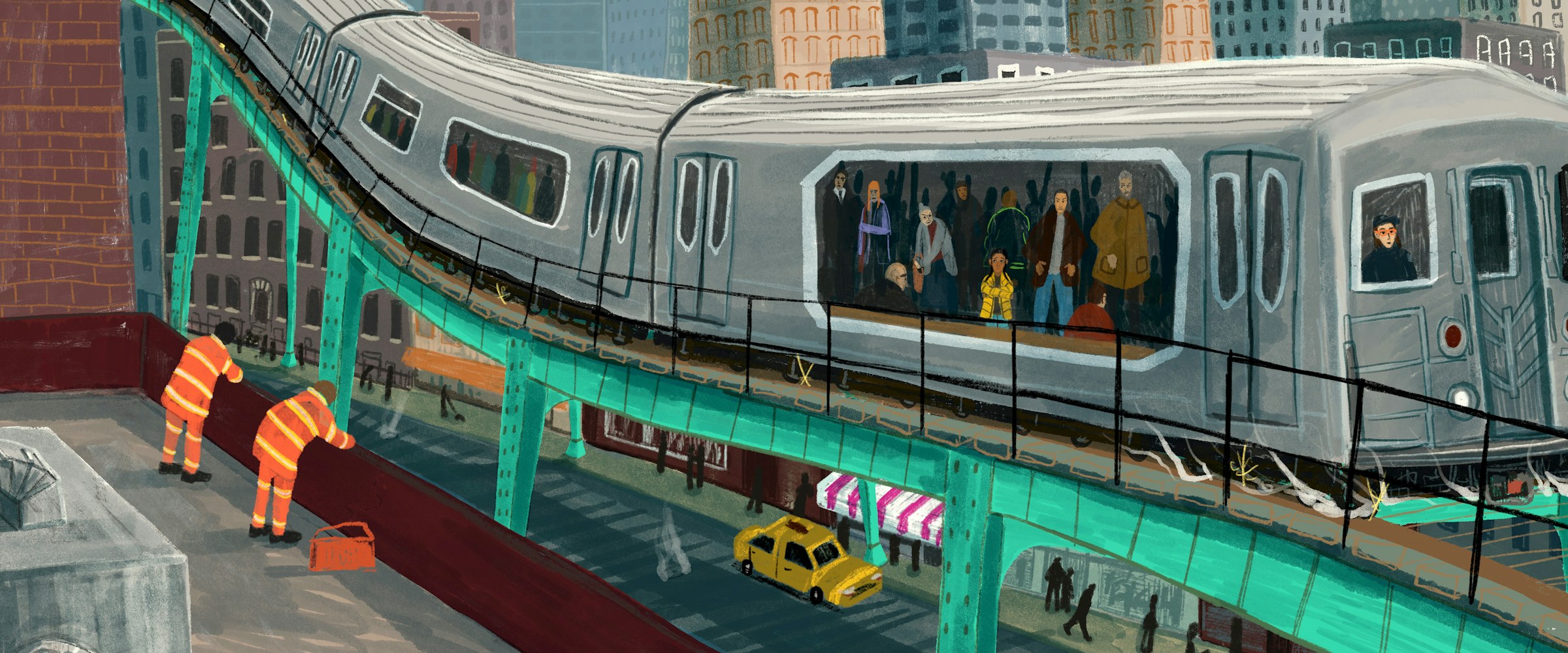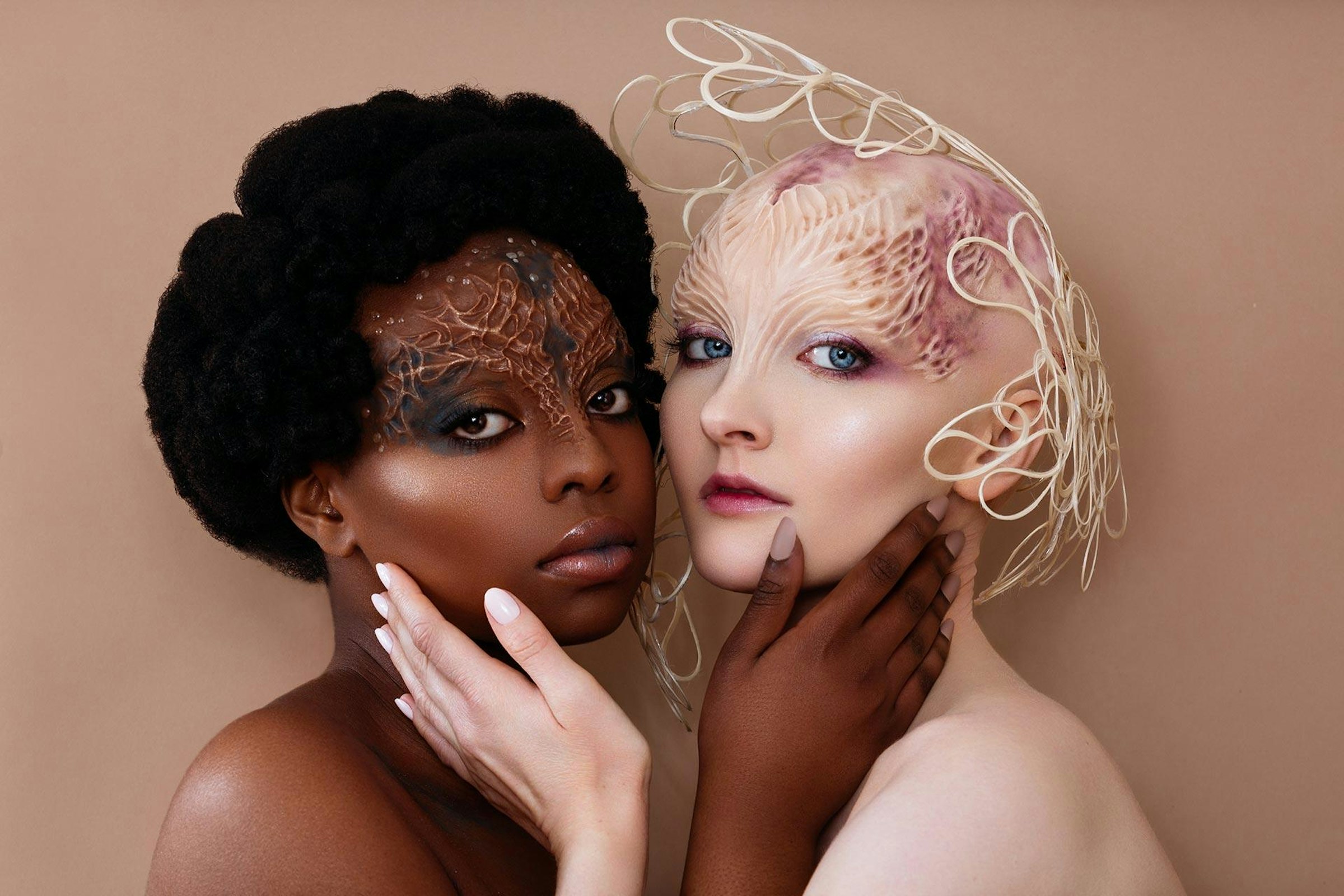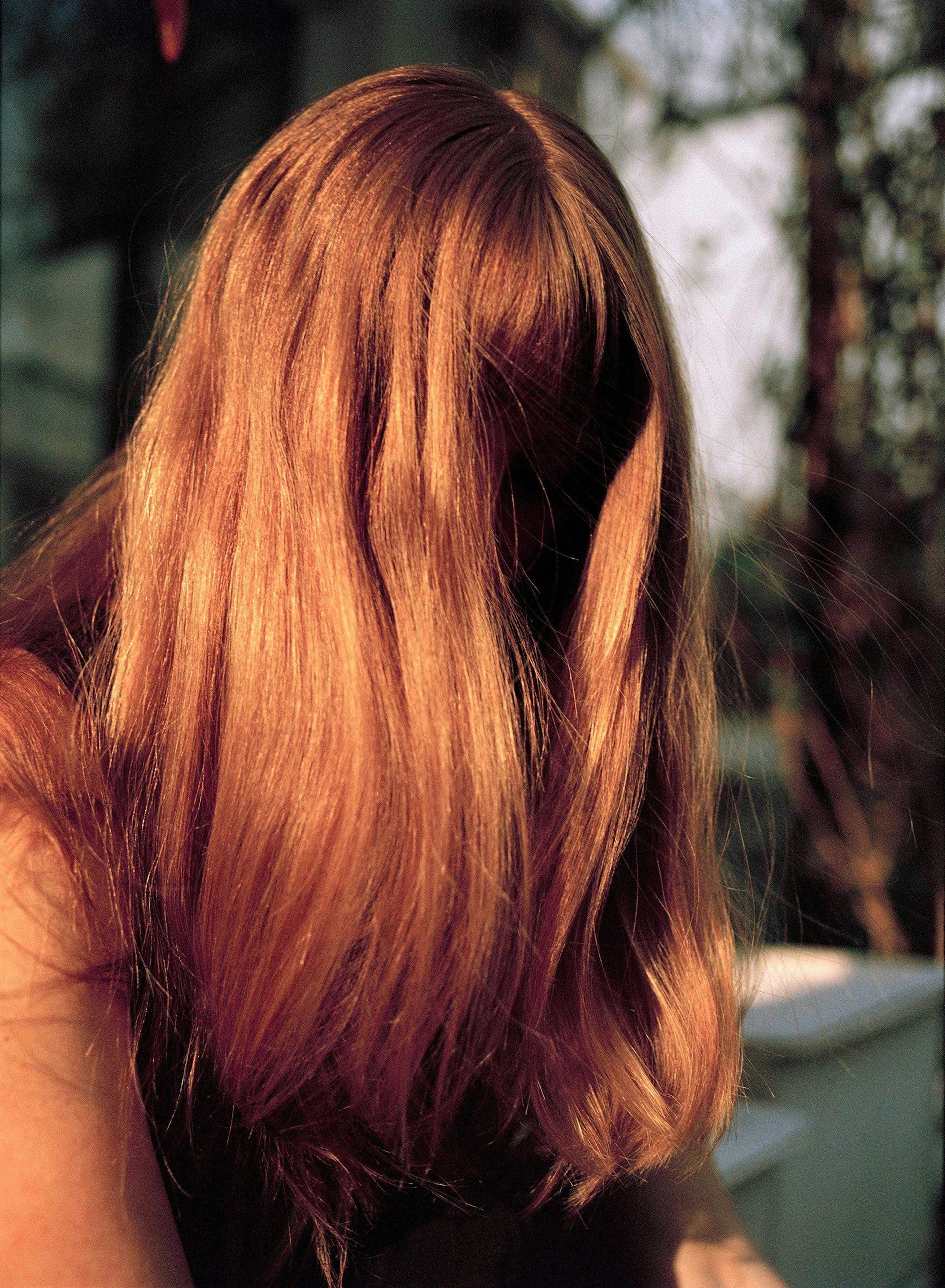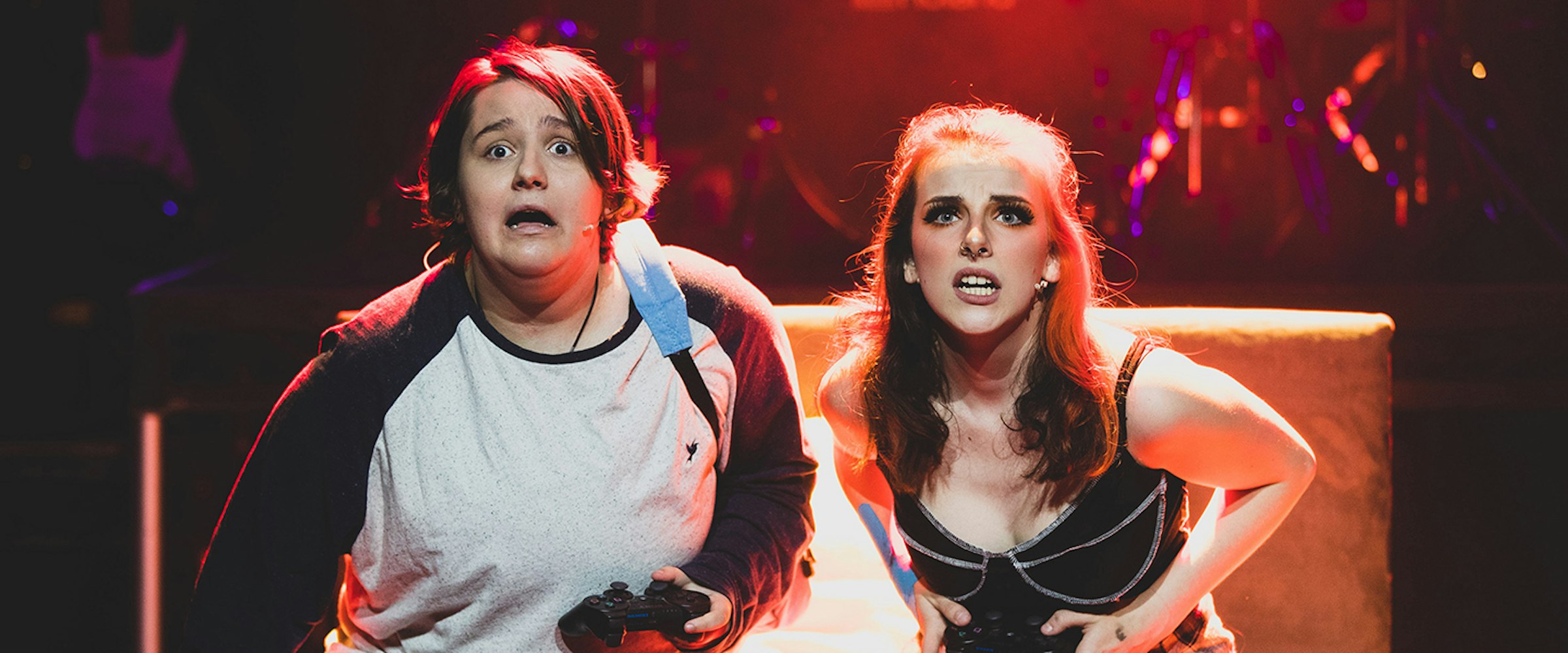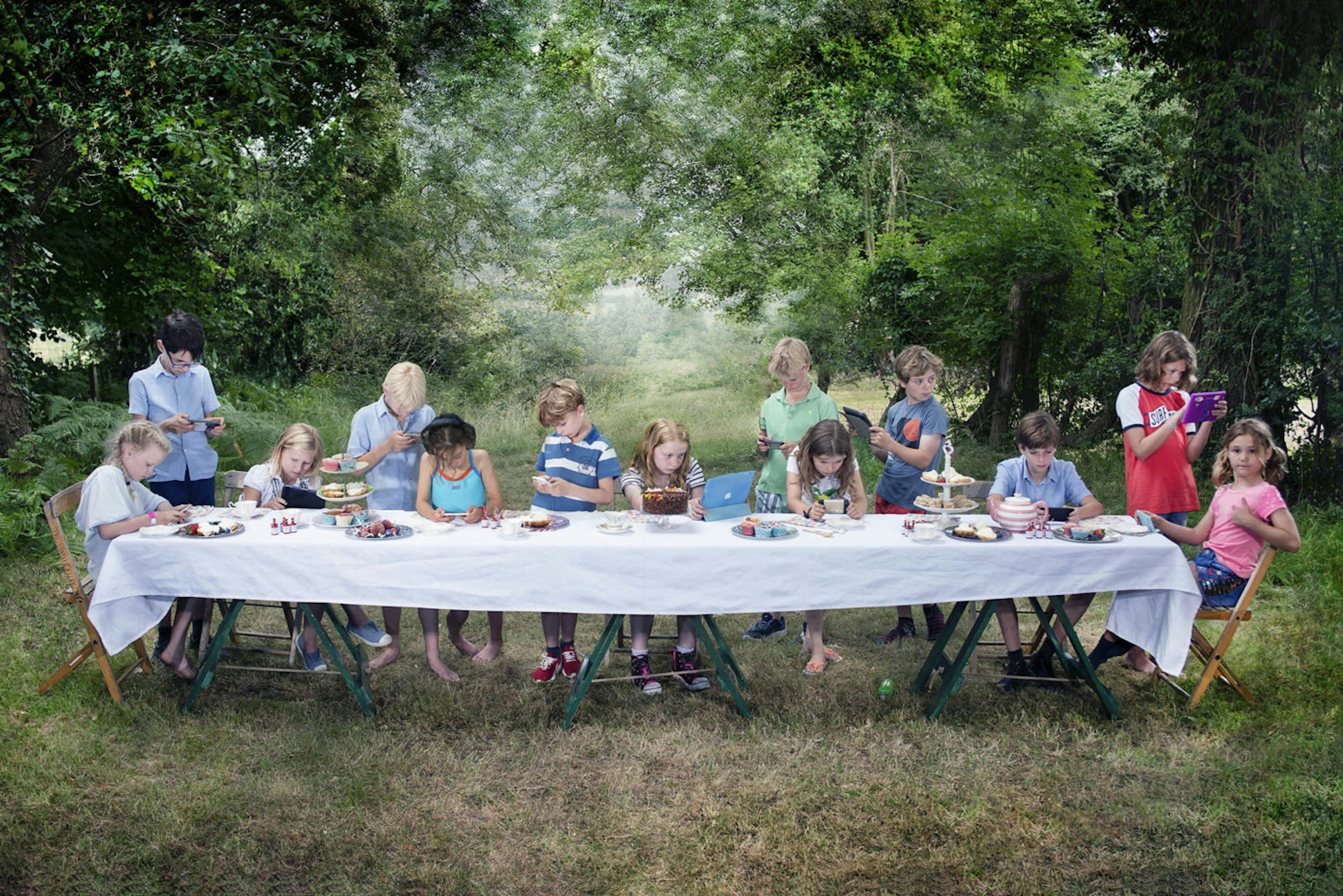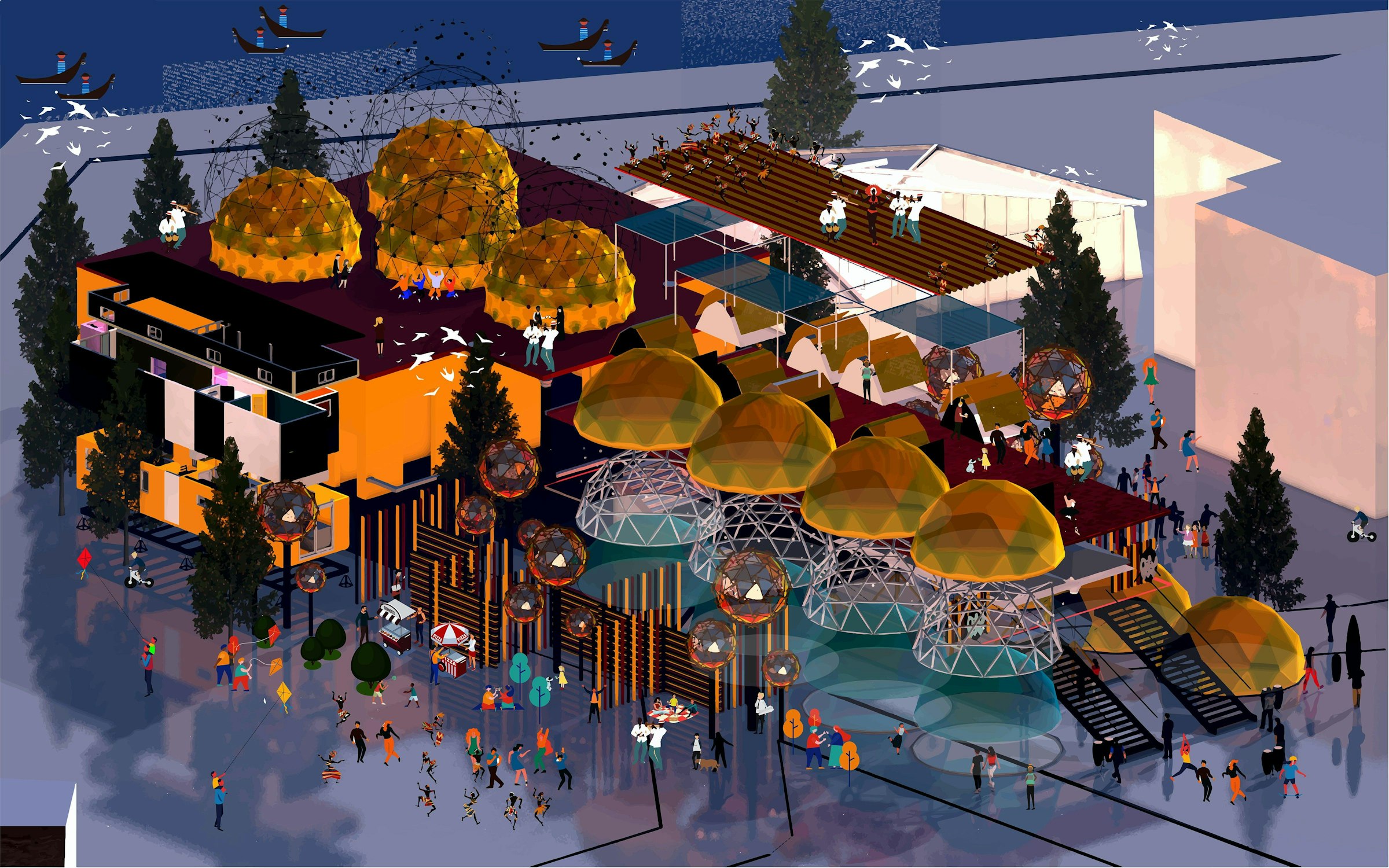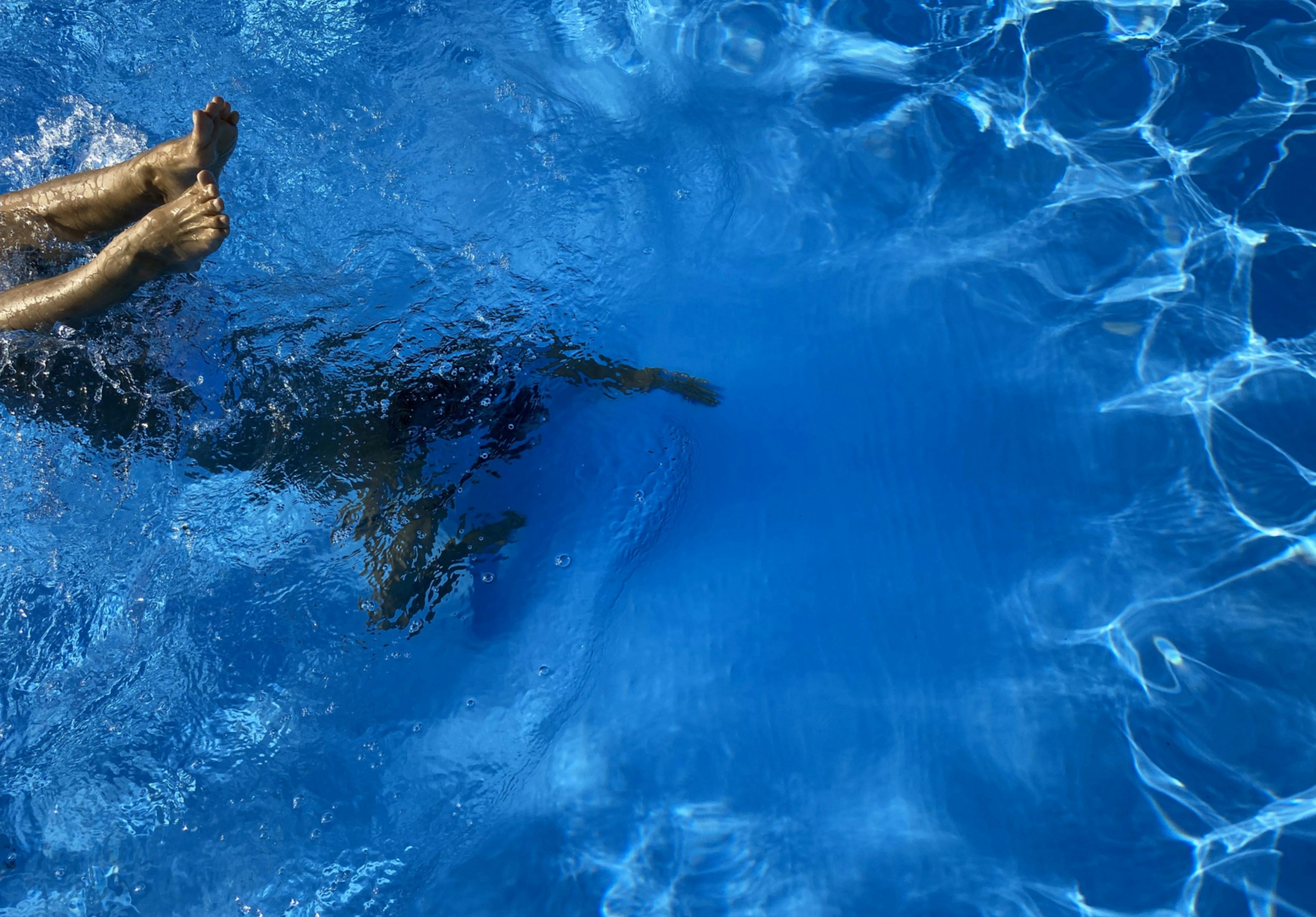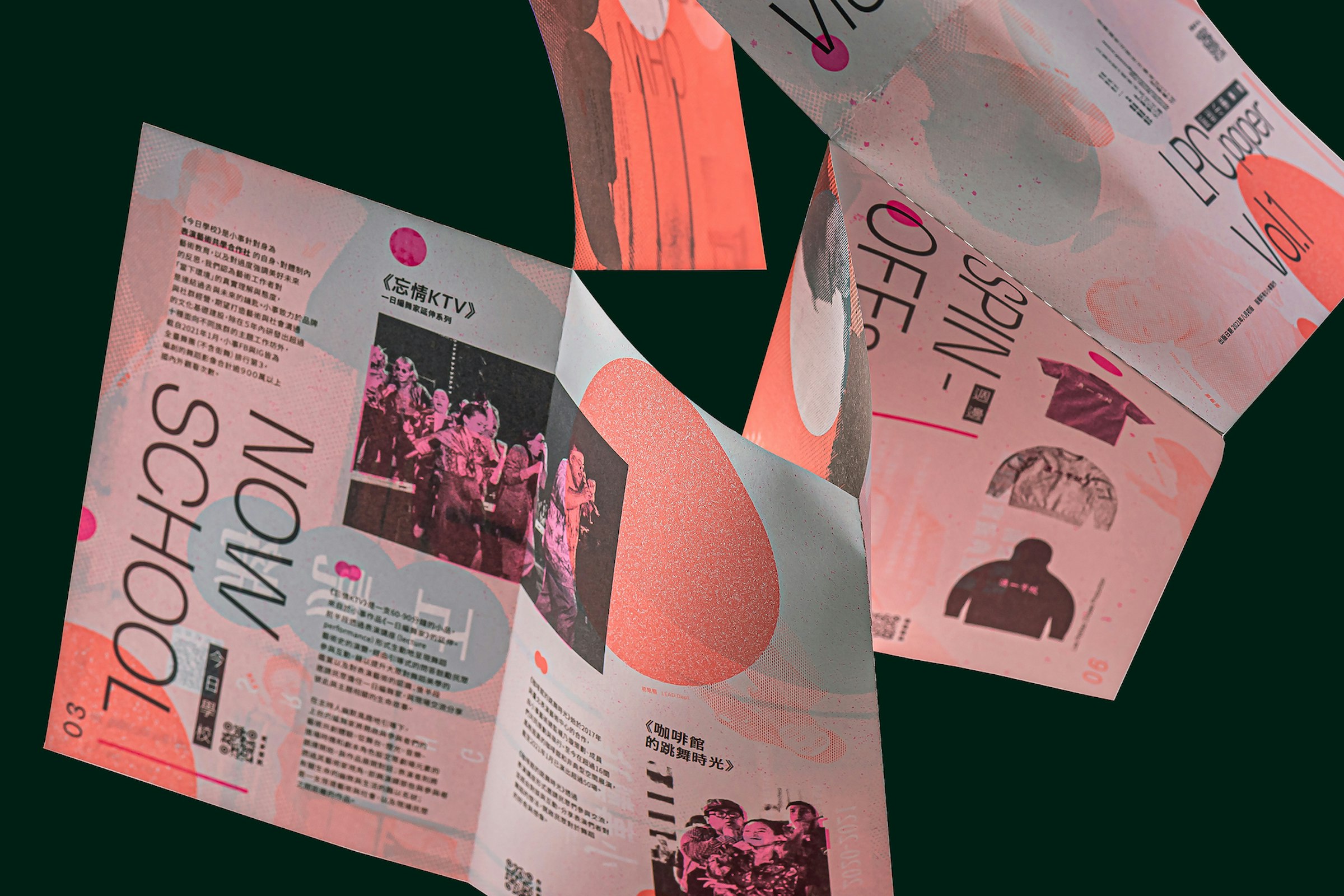- Home
- Latest
- Student Stories
- Breaking the mould: The magic of hybrid ...

For most of us, printing is typically seen as a linear process – choosing one method and producing a single type of output, whether that’s screen printing, cyanotype, or digital printing. However, the workshop introduced us to the concept of hybrid printing, where multiple printing techniques are combined to create unique, multi-dimensional artworks. This experience opened our eyes to a new realm of possibilities in printmaking.
The workshop began with an exploration of combining digital prints with screen printing. We started by creating a digital print background of our choice. This digital base allowed for a high degree of customisation, from intricate patterns to photographic images. Once our backgrounds were printed, we moved on to screen printing, layering various elements over our digital prints. This process was particularly fascinating as it often led to slight misalignments – known as "offprints." These imperfections added a human touch to the artwork, emphasising its handmade quality and making each piece unique.
Next, we delved into cyanotype printing, a method known for its rich blue hues. We began by coating paper in different ways, using brushes to create distinct patterns and textures. After letting the coated paper dry, we exposed it to UV light, a process that determines the intensity of the blue colour. This step was crucial as it set the foundation for further experimentation.
Once the cyanotype prints were ready, we introduced screen printing into the mix. The bright colours of the screen prints contrasted beautifully with the deep blues of the cyanotypes, creating a striking visual effect. We didn’t stop there; we were encouraged to experiment with bleaching the cyanotype paper using baking soda. This process removed the blue colour, allowing us to dye the paper with coffee, giving it a vintage, sepia-toned look. Screen printing over these altered cyanotypes resulted in entirely new and unexpected outcomes, showcasing the endless possibilities of hybrid printing.
One of the more unconventional experiments involved cyanotype on fabric. We stained jackets and other textiles, then applied the cyanotype process to them. This exercise demonstrated that hybrid printing is not confined to paper and can be used to create wearable art. The results were stunning, with intricate blue designs standing out vividly against the fabric.
Inspired by the workshop, I began integrating hybrid printing techniques into my Master's project. My project focuses on fractal patterns and their connection to music, specifically mapping these patterns to sound wavelengths to create visual representations of songs. Drawing from the workshop, I decided to use screen printing to layer my fractal patterns over digitally printed backgrounds. By separating the fractal design into three colour layers, I was able to produce dynamic and visually engaging prints.
Additionally, I experimented with printing on acetate sheets, discovering yet another dimension to hybrid printing. The transparency of acetate allowed for intriguing overlays and interactions between the printed layers and the background, offering a new perspective on the fractal patterns.
This hybrid printing workshop was more than just a learning experience; it was a paradigm shift. By encouraging us to break free from traditional constraints and explore the interplay of various printing methods, it unlocked a world of creative potential. This workshop not only expanded our technical skills but also fundamentally altered our approach to art and design.
For me, the integration of hybrid printing techniques into my Master's project has opened new avenues for creativity and expression. The ability to blend different printing methods has enriched my work, making it more complex and multifaceted. This workshop has shown that in art, as in life, the most extraordinary results often come from the synergy of diverse elements.
The hybrid printing workshop at AUB was a groundbreaking experience that redefined the boundaries of printmaking. It underscored the importance of experimentation and the beauty of imperfection, leaving us all with a deeper appreciation for the art of printing and a renewed sense of creative freedom.
